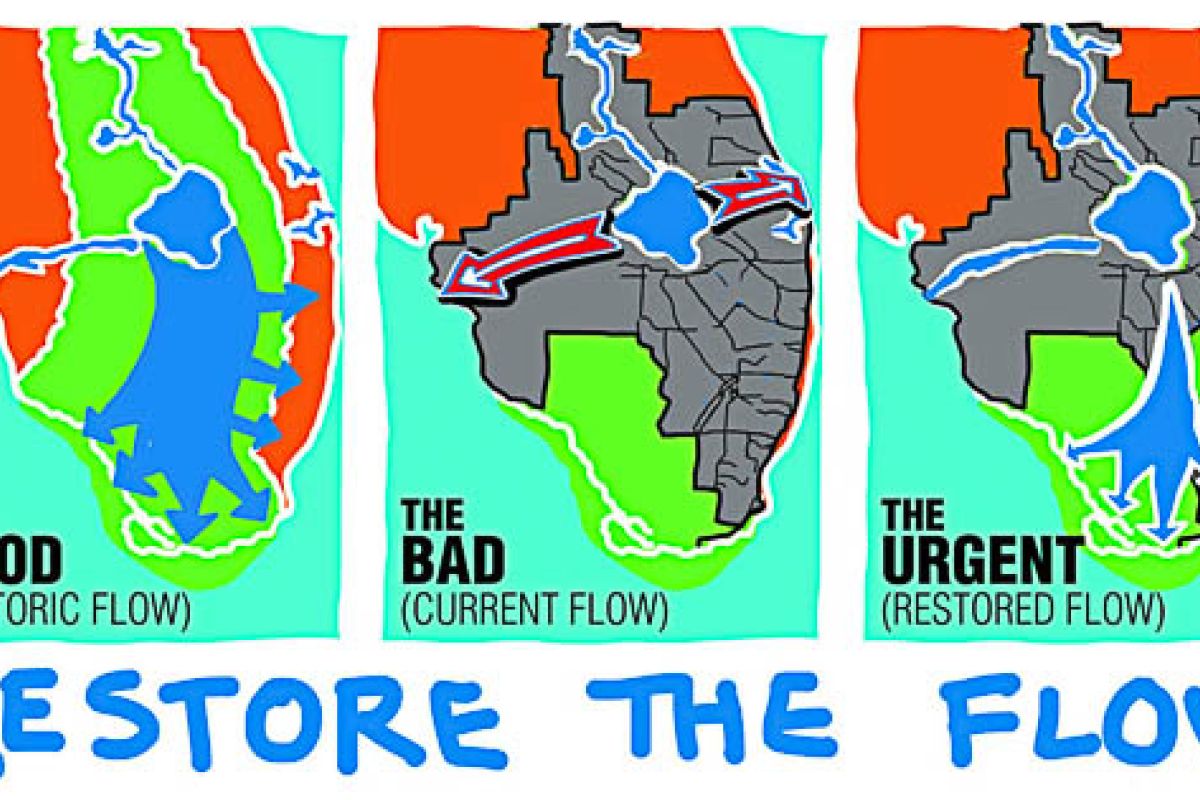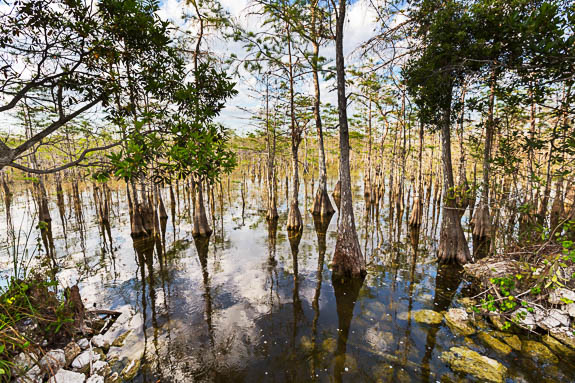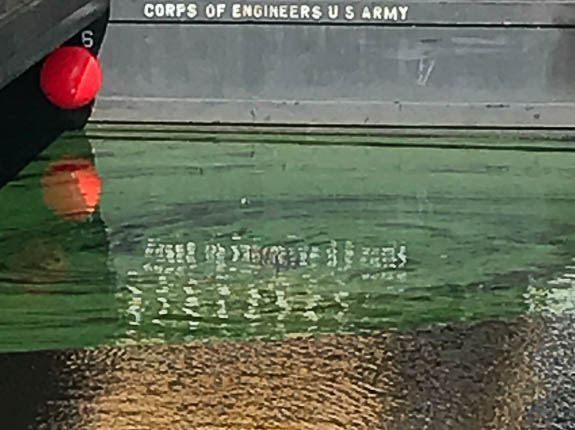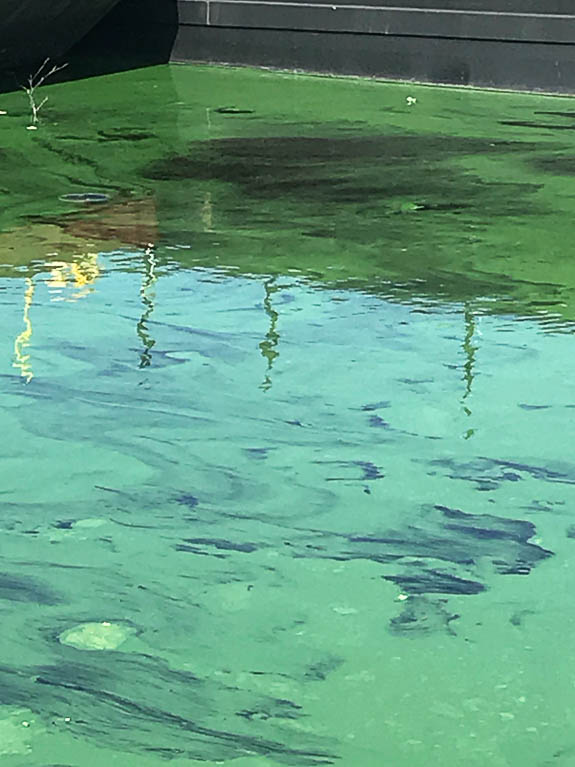
Local Cortezian On A Mission To Inform, Educate & Inspire Action Of All Floridians Respecting The Red Tide & Toxic Algae Problem On The Florida Coasts
This article is part one in a series designed to address the pollution issues facing our environment, our health and our economy. My desire is to inform, educate and inspire action of all Floridians to take action and demand solutions sooner rather than later. Thanks for reading…Rose Lipke.
HOW DID WE GET HERE?
Before we can even rationally discuss any solutions regarding water quality and management in Florida we have to know how we have found ourselves trying to survive amidst toxic blue-green algae, historically strong and long red tide blooms and the trail of death and destruction they leave in their wake. This is a complicated problem that didn’t happen overnight, and the solutions are what the very future of our state depends upon.
THE KISSIMMEE-OKEECHOBEE-EVERGLADES WATERSHED
 Most people don’t realize that the Everglades as a watershed system begins far to the north of Lake O, in the Orlando area with the Kissimmee River Basin. The entire watershed area once flowed down into the river through creeks and tributaries and downriver into Lake Okeechobee, which then slipped over the southern banks of the lake along the almost imperceptible slope of the river of grass into Florida Bay. Underlying the river of grass is a bedrock of porous limestone that acts as a sponge, holding massive amounts of fresh water which slowly seeps into lakes, springs and marsh systems, but also holds back salt water intrusion into the aquifer and into Florida Bay, a shallow brackish bay with relatively low salinity levels. It was a gloriously graceful, balanced system, creating the only wetland system of its kind on the continent, an exquisite patchwork of freshwater marshes, mangrove swamps, pinelands and coastal marine waters. The Kissimmee River, a vital part of the Everglades functionality as a whole, suffered one of the first and perhaps the most devastating ecological blows due to the Corps of Engineers effort to manage Florida’s fresh water. What was once over 100 miles of winding river and tributaries that flowed gradually down the spine of the state to Lake Okeechobee was converted into the C-38 canal, a 56-mile straight line channel connecting directly to the lake. This resulted in the utter devastation of surrounding wetlands and their function as natural filtration to surrounding runoff was lost.
Most people don’t realize that the Everglades as a watershed system begins far to the north of Lake O, in the Orlando area with the Kissimmee River Basin. The entire watershed area once flowed down into the river through creeks and tributaries and downriver into Lake Okeechobee, which then slipped over the southern banks of the lake along the almost imperceptible slope of the river of grass into Florida Bay. Underlying the river of grass is a bedrock of porous limestone that acts as a sponge, holding massive amounts of fresh water which slowly seeps into lakes, springs and marsh systems, but also holds back salt water intrusion into the aquifer and into Florida Bay, a shallow brackish bay with relatively low salinity levels. It was a gloriously graceful, balanced system, creating the only wetland system of its kind on the continent, an exquisite patchwork of freshwater marshes, mangrove swamps, pinelands and coastal marine waters. The Kissimmee River, a vital part of the Everglades functionality as a whole, suffered one of the first and perhaps the most devastating ecological blows due to the Corps of Engineers effort to manage Florida’s fresh water. What was once over 100 miles of winding river and tributaries that flowed gradually down the spine of the state to Lake Okeechobee was converted into the C-38 canal, a 56-mile straight line channel connecting directly to the lake. This resulted in the utter devastation of surrounding wetlands and their function as natural filtration to surrounding runoff was lost.
DRAIN THAT ABOMINABLE, PESTILENCE-RIDDEN SWAMP
The first round of controls placed on the Everglades came after a major flood in 1903 that destroyed most of the crops and farms in the Everglades watershed area. Then Governor Napoleon Bonaparte Broward, who won the election on the promise to “drain that abominable, pestilence-ridden swamp” a statement which pretty much has set the tone and the mindset that drove the long series of drainage and diversion projects over the next several decades. A series of hurricanes and floods in the late 20’s shifted the focus from drainage to flood control. In 1930 the Army Corps of Engineers was brought in to construct a continuous ridge of levees along the perimeter of Lake Okeechobee, along with 4 major canals connecting the lake to the Atlantic Ocean. This gave agriculture the ability to rebuild, gaining a stranglehold on the region that it has yet to relinquish. Sugar was and still is the predominant crop in the Glades, and sugar production doubled in the first decade after the levees were created, solidifying their power over the region.
MORE HURRICANES…MORE CONTROLS
 The late 40’s brought with it a series of hurricanes and record rainfall where hundreds of thousands of both agricultural and urban areas were inundated with 108 inches of rainfall in just 6 months. This ushered in an era of massive water control infrastructure that is still in place. Construction began on a complicated series of dikes, dams and canals with the ability to control the flow of 3.8 billion liters of water per day. These resulted in the ability for south Florida to enjoy an explosion of population growth that continues to this day. As a consequence, the river of grass was plunged into a near perpetual drought as the flow of fresh water was choked off and re-directed. Florida Bay is no longer brackish, and the intrusion of saltwater has forever changed the biodiversity of the bay. In an effort to figure out how to restore the Everglades, a computer based-model was developed to better understand the natural flow of water. When the model was run without the controls placed by man over the last 100 years, it shows virtually all of south Florida to be uninhabitable, except for one small strip of land along the east coast. This is the extent we have irrevocably desecrated this pristine, wholly unique tropical wetland
The late 40’s brought with it a series of hurricanes and record rainfall where hundreds of thousands of both agricultural and urban areas were inundated with 108 inches of rainfall in just 6 months. This ushered in an era of massive water control infrastructure that is still in place. Construction began on a complicated series of dikes, dams and canals with the ability to control the flow of 3.8 billion liters of water per day. These resulted in the ability for south Florida to enjoy an explosion of population growth that continues to this day. As a consequence, the river of grass was plunged into a near perpetual drought as the flow of fresh water was choked off and re-directed. Florida Bay is no longer brackish, and the intrusion of saltwater has forever changed the biodiversity of the bay. In an effort to figure out how to restore the Everglades, a computer based-model was developed to better understand the natural flow of water. When the model was run without the controls placed by man over the last 100 years, it shows virtually all of south Florida to be uninhabitable, except for one small strip of land along the east coast. This is the extent we have irrevocably desecrated this pristine, wholly unique tropical wetland
THE CONSEQUENCES
What we are witnessing are the consequence of trying to control and manage this vastly wild and beautiful resource. The runoff from all the development and dairy farms to the north of Lake O, streamlined by the C-38 canal without the natural wetlands that filter pollutants combined with the practice of back pumping from farmland in the Everglades Agricultural area to the south have turned Lake Okeechobee into a virtual repository of pollution for the entire state, both urban and agricultural. The high levels of two nutrients, phosphorus and nitrogen, found in runoff from agriculture, urban development and sewage have caused the rapid growth of algae and plants in the lake. These nutrients and minerals accumulate on the lakebed, concentrating their amounts and have given rise to toxic blue-green algae blooms, the first major bloom occurring back in 1983, when the toxic algae covered the entire surface of the lake. This process is called eutrophication, a condition that the powers that be have known about, monitored and tried to control since the early 70’s. What we are seeing today is a miserable failure by government and government agencies who are charged with setting controls on the agricultural industries and the amount of nutrients entering the lake.
 While we watch in horror as our rivers and estuaries are crippled by the toxic releases from Lake O, it’s easy to point all the blame on Big Sugar or the Army Corps of Engineers. When those nutrient and toxin rich releases hit our coasts feeding deadly red tides, killing fish, mammals and the seagrasses in their path we want to put the blame squarely in one place or another but the truth is that this is a disaster 100 years in the making with political, economic, and cultural influences pressing on the solutions from every direction so nothing meaningful is getting accomplished to remedy the problem. And the problem is growing with ever deadlier consequences to the environment, human health and economic sustainability. It’s complicated but we have reached the critical mass point where we can’t wait around much longer while our government panders to this special interest or that. I beg everyone to educate yourselves, get involved and raise holy hell until something meaningful is done to fix our sick, dying state. Don’t fall silent out of fear of damaging tourism when the releases cease in the dry season, out of sight out of mind. We must keep pushing because the releases will come again, year after year until our estuaries simply can’t recover because at that point, no one will want to come here anyway.
While we watch in horror as our rivers and estuaries are crippled by the toxic releases from Lake O, it’s easy to point all the blame on Big Sugar or the Army Corps of Engineers. When those nutrient and toxin rich releases hit our coasts feeding deadly red tides, killing fish, mammals and the seagrasses in their path we want to put the blame squarely in one place or another but the truth is that this is a disaster 100 years in the making with political, economic, and cultural influences pressing on the solutions from every direction so nothing meaningful is getting accomplished to remedy the problem. And the problem is growing with ever deadlier consequences to the environment, human health and economic sustainability. It’s complicated but we have reached the critical mass point where we can’t wait around much longer while our government panders to this special interest or that. I beg everyone to educate yourselves, get involved and raise holy hell until something meaningful is done to fix our sick, dying state. Don’t fall silent out of fear of damaging tourism when the releases cease in the dry season, out of sight out of mind. We must keep pushing because the releases will come again, year after year until our estuaries simply can’t recover because at that point, no one will want to come here anyway.
Photos courtesy of Everglades-Trust, depositphotos and Rose Lipke.

